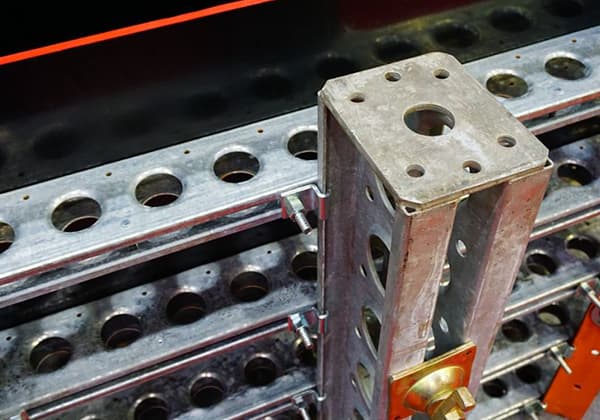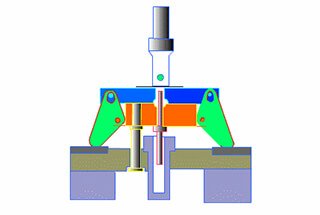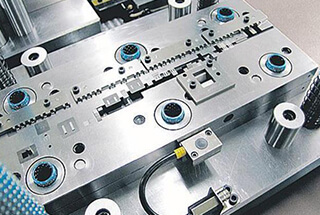1. Introduction
In view of the problem of edge crack of chain plate when 40Mn steel strip is pressed, the chemical composition and metallographic structure of edge crack chain plate are analyzed.
The results show that the main reason for the edge crack of 40Mn chain plate is that there are a large number of oversized non-metallic inclusions in the steel, the structure of the strip steel is uneven, and there is band segregation.
As a medium carbon low alloy steel, 40Mn has high hardness and wear resistance after quenching, so it has become an important raw material for chain plate processing.
Recently, during the production of a certain type of chain, our company found that 40Mn steel stamped chain pieces had a certain proportion of chain plate edge cracking (see Fig. 1).

Fig. 1 macro morphology of chain plate edge crack
A large number of products are scrapped.
Therefore, the cracked chain plate is inspected and analyzed to solve the problem of edge crack when the chain plate is pressed.
2. Chemical composition analysis
The chemical composition of the edge crack chain plate is analyzed, and the results are shown in Table 1.
Table 1 chemical composition of 40Mn steel edge crack chain plate (mass fraction) (%)
| Element | Measured values | Standard value |
| C | 0.4 | 0.37~0.44 |
| Si | 0.19 | 0.17~0.37 |
| Mn | 0.85 | 0.70~1.00 |
| Cr | 0.21 | ≤0.25 |
| P | 0.02 | ≤0.035 |
| S | 0.007 | ≤0.035 |
| Cu | 0.13 | ≤0.25 |
According to the test results, the chemical composition of the edge crack chain plate meets the standard requirements.
3. Macro morphology analysis
It can be seen from Fig. 1 that the shear surface of the chain plate is relatively smooth without obvious traces of improper processing.
The cracking position is located at 1 / 3 of the thickness of the chain plate, and the cracking severity is different.
4. Metallographic structure analysis
Metallographic analysis was carried out on several edge crack chain plates.
After sampling at the crack and inlaying and grinding, it was observed that the crack depth was 1.0-2.0mm, as shown in Fig. 2.
.jpg)
The crack extends obliquely inward from the surface and then extends inward parallel to the surface of the chain plate.
It is the crack end of a cracked chain plate (see Fig. 3).
.jpg)
There are a large number of oversized sulfide inclusions (see Fig. 4) and silicate inclusions (see Fig. 5) around them.
.jpg)
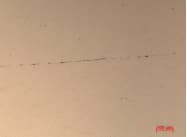
It is evaluated according to GB / T 10561-2005 standard rating chart microscopic inspection method for determination of non-metallic inclusion content in steel.
The inclusion grade of cracked chain plate is A3.0 and C3.0.
After corrosion with 4% nitric acid alcohol, the edge structure of the chain plate has obvious deformation on one side due to the impact of stamping processing.
The crack cracking direction is consistent with the deformation direction of the structure.
There is no decarburization on both sides of the crack.
The structure is punctate spheroidite and a small amount of pearlite + banded ferrite, as shown in Fig. 6.
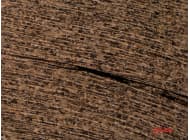
There is an obvious black strip-shaped structure at the crack of one side chain plate, and the crack opening is just located on the black strip-shaped structure, as shown in Fig. 7.
.jpg)
Therefore, the structure of the chain plate is not uniform, and the crack is particularly obvious, showing strip-shaped structure segregation, which shows that the crack is a strip-shaped high-carbon pearlite structure.
Through the micro Vickers hardness test on the black strip position and the normal position in Fig. 7, it is found that the average hardness of the black strip position is 274HV0.5, while the average hardness of the normal position is only 220HV0.5, and the hardness of the black strip position is significantly higher than the normal value.
It is confirmed that the black band is located in a large amount of accumulation area of C elements.
5. Cause analysis
Through the above analysis, it can be seen that there are two main reasons for the stamping edge crack of 40Mn steel chain plate.
(1) There are many oversized non-metallic inclusions in the chain plate.
On the one hand, the non-metallic inclusions destroy the continuity of the material and seriously reduce its plasticity.
Under the action of external force, plastic deformation occurs around the non-metallic inclusion due to stress concentration, resulting in a large number of dislocations around the non-metallic inclusion;
When the dislocation reaches the interface between the non-metallic inclusion and the matrix under the impact force, the interface separates to form micropores, and the micropores rapidly aggregate and expand under the impact force, resulting in the edge crack of the chain plate.
On the other hand, silicate inclusions belong to brittle and unchanging inclusions, which have a great difference with the thermal deformation ability of the matrix.
During rolling, the steel strip is easy to form pores or cracks at the interface between non-metallic inclusions and steel matrix.
(2) The material structure is not uniform, and the band segregation of element C is serious.
The band segregation causes the existence of high hardness bands in the strip steel, resulting in the uneven cross-sectional performance of the material.
Under the impact load, the stress concentration phenomenon is easy to occur in the area where element C gathers and at the junction.
At the same time, under the instantaneous action of impact load, it is easy to initiate microcracks and rapidly expand, resulting in edge cracks in the stamping process of strip steel.
6. Conclusion
1) A large number of non-metallic inclusions in 40Mn strip steel are one of the main reasons for the edge crack of chain plate stamping.
The non-metallic inclusions in the strip steel are mainly class A and class C inclusions.
2) The uneven structure of 40Mn strip steel and the serious band segregation of C element are also one of the main reasons for the edge crack of chain plate stamping.
The band segregation causes the existence of high hardness bands in the strip steel, resulting in the uneven cross-sectional performance of the strip steel.
